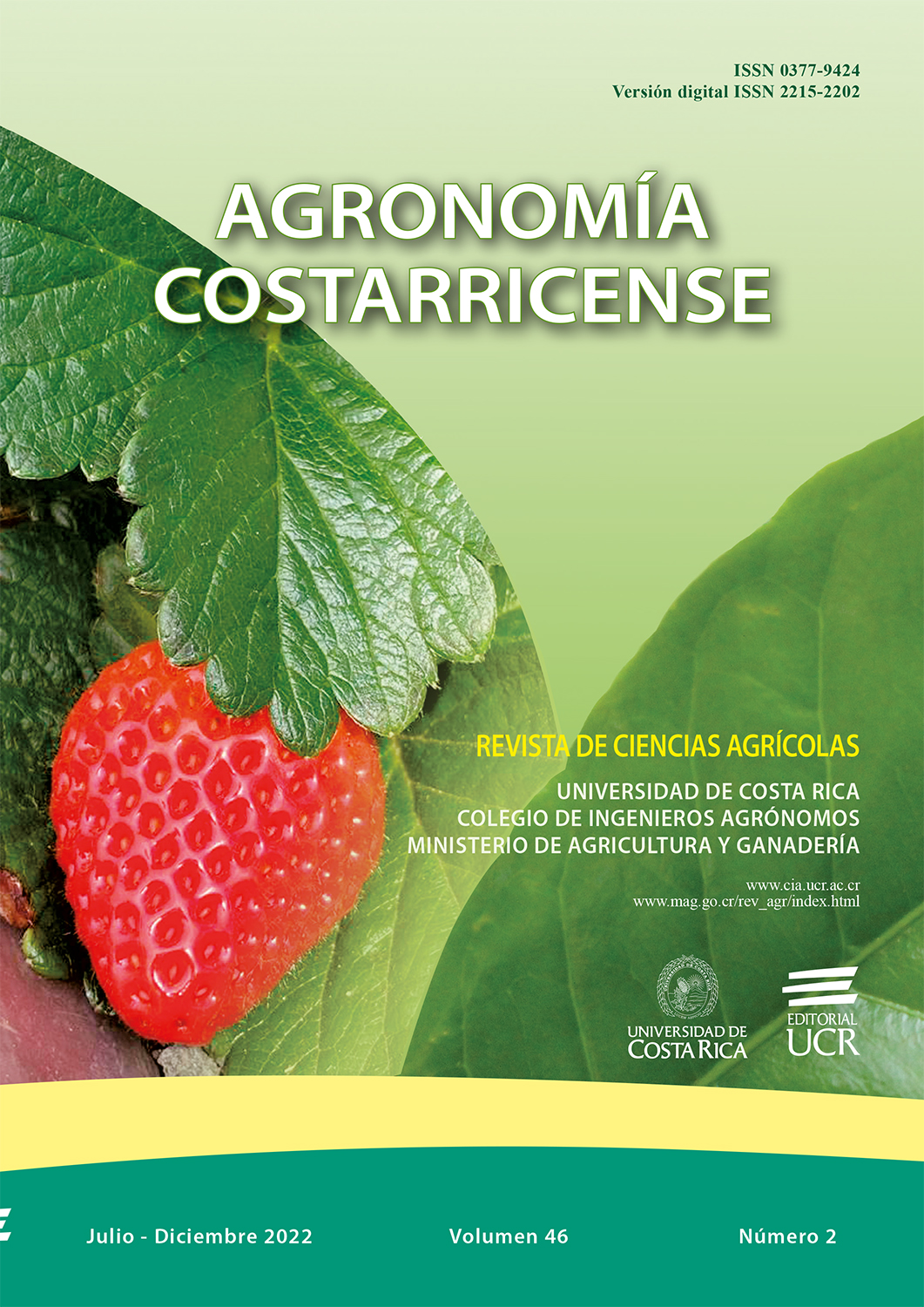Abstract
Introduction. Fruit soft rot, a preharvest disease, affects banana fruit. In annual harvest plantations, its losses reach from 0.3 to 1.2 t.ha-1.year-1 of fruit. Objective. Identify associated microorganisms, describe disease symptoms, and evaluate in vitro microbiological and chemical control alternatives. Materials and methods. Symptom description, determination of associated microorganisms and pathogenicity tests were analyzed from diseased tissue. Using double confrontation methodology, inhibition potential of thirteen commercial formulations of pure strains and mixtures of microorganisms, four copper and one iodine formulations were evaluated on disease associated agents. Minor and major diameter of inhibition were measured at 24. 48 and 120 hours. Data ANOVA analysis wasmade using LSD Fisher test. Results. Diseased tissue associated agent was identified as Erwinia chrysanthemi (sin. Dickeya chrysanthemi). Its pathogenicity was proved by Koch´s postulates. It is also presumed that Erwinia carotovora (sin. Pectobacterium carotovorum) has joint participation in this pathosystem, since it was always isolated from diseased tissue. The best in vitro antagonistic effect was observed with Bacillus pumilus strain QST2808 and Bacillus subtilis strain QST713. Regarding to chemical alternatives, the best in vitro effect was observed with copper sulphide 28.8% complete dose, followed by its half dose, and Ethabol iodine 30 ml.L-1. Conclusion. Disease associated microorganisms were identified, besides, there is proposed microbiological and chemical alternatives with in vitro potential that could be considered in field trials.
Keywords: Fruit soft rot; Erwinia sp.; Dickeya chrysanthemi; Pectobacterium carotovorum; Antagonism; Inhibition.


